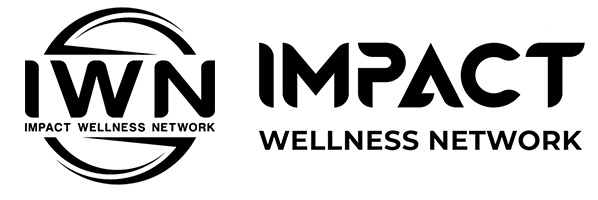The opioid crisis has undoubtedly left a deep and painful scar on our society—one that calls for urgent and coordinated action. Enter the NIH HEAL Initiative, a concerted effort led by the National Institutes of Health to combat opioid addiction and find long-term solutions. But what exactly are the goals and strategies of this ambitious initiative? Let’s unpack this together.
The Growing Need for the HEAL Initiative
The opioid epidemic has claimed thousands of lives and devastated countless families across the United States. With opioids being misused at alarming rates, the NIH realized that radical intervention was needed. This is where the HEAL Initiative steps in—aiming to provide not just relief, but also a sustainable path to recovery.
What Is the NIH HEAL Initiative?
HEAL stands for Helping to End Addiction Long-term. Launched in April 2018, the initiative targets multiple aspects of the opioid crisis—from prevention and treatment to recovery and research. By addressing these different facets, the NIH aims to create a holistic approach to solving this complex issue.
The Core Goals of the HEAL Initiative
The initiative is built around several key objectives:
- Reduce opioid overdose deaths
- Enhance pain management without addiction risk
- Improve treatments for opioid dependence
- Advance research in addiction and pain management
These goals are comprehensive, reflecting a deep understanding of the multifaceted nature of the opioid crisis.
Strategies to Combat Opioid Addiction
Prevention Efforts
One of the primary strategies is prevention. By identifying at-risk populations and intervening early, the NIH aims to nip the problem in the bud. This involves education, awareness campaigns, and community outreach programs.
Enhancing Pain Management
Traditional pain management methods often rely heavily on opioids, which can lead to addiction. The HEAL Initiative is investing in research to develop safer, non-addictive pain management techniques. This includes exploring alternative therapies like acupuncture and physical therapy.
Treatment Innovations
The initiative aims to improve existing treatments for opioid addiction and develop new ones. This includes medications like buprenorphine and methadone, as well as behavioral therapies. By diversifying treatment options, the NIH hopes to provide more effective solutions for those struggling with addiction.
Collaborations and Partnerships
Government Agencies
The NIH collaborates with various government agencies to amplify the impact of its efforts. This includes partnerships with the FDA, CDC, and SAMHSA, among others. These collaborations help streamline efforts and ensure a unified approach to tackling the opioid crisis.
Academic Institutions
Research is at the heart of the HEAL Initiative. By partnering with leading academic institutions, the NIH can leverage cutting-edge research to develop innovative solutions. This also fosters an environment of continuous learning and improvement.
Community Organizations
Local community organizations play a crucial role in the initiative’s success. These organizations often have a deeper understanding of the specific challenges faced by their communities and can provide valuable insights and support.
Funding and Resource Allocation
The NIH has committed substantial resources to the HEAL Initiative. With billions in funding allocated, the initiative can support a wide range of projects and research endeavors. This financial commitment underscores the importance of the initiative and its potential impact on the opioid crisis.
Measuring Success
Tracking Progress
To ensure the initiative is on the right track, the NIH employs rigorous tracking and evaluation methods. This includes regular progress reports, data analysis, and outcome assessments.
Public Reporting
Transparency is key to the initiative’s success. The NIH regularly publishes updates and findings related to the HEAL Initiative. This helps keep the public informed and engaged, fostering a sense of collective responsibility.
The Role of Technology
Data Analytics
Advanced data analytics plays a crucial role in the initiative. By analyzing large datasets, researchers can identify patterns and trends related to opioid use and addiction. This data-driven approach helps inform strategies and interventions.
Telemedicine
In the age of digital transformation, telemedicine has emerged as a valuable tool in the fight against opioid addiction. The HEAL Initiative supports the use of telemedicine to provide remote counseling and treatment options, making it easier for individuals to access the help they need.
Mobile Applications
Mobile apps designed to support addiction recovery are another focus of the initiative. These apps offer features like progress tracking, motivational resources, and instant access to support networks, providing a lifeline for those in recovery.
Real-Life Impact Stories
Success Stories
The HEAL Initiative has already made a significant impact on many lives. By sharing success stories, the NIH aims to inspire others and demonstrate the initiative’s effectiveness. These stories also provide valuable insights into what works and what doesn’t.
Challenges Faced
While the initiative has achieved considerable success, it is not without its challenges. By openly discussing these challenges, the NIH fosters a culture of transparency and continuous improvement.
Contact Impact Wellness Network – Addiction Treatment Center Today
The NIH HEAL Initiative is a comprehensive and multidisciplinary effort to address the opioid crisis. With a focus on prevention, treatment, collaboration, and innovation, the initiative has already made significant strides in combating this complex issue.
If you or someone you know is struggling with opioid addiction, reach out to Impact Wellness Network – Addiction Treatment Center today for support and resources. Together, we can make a difference in tackling this urgent public health issue.

